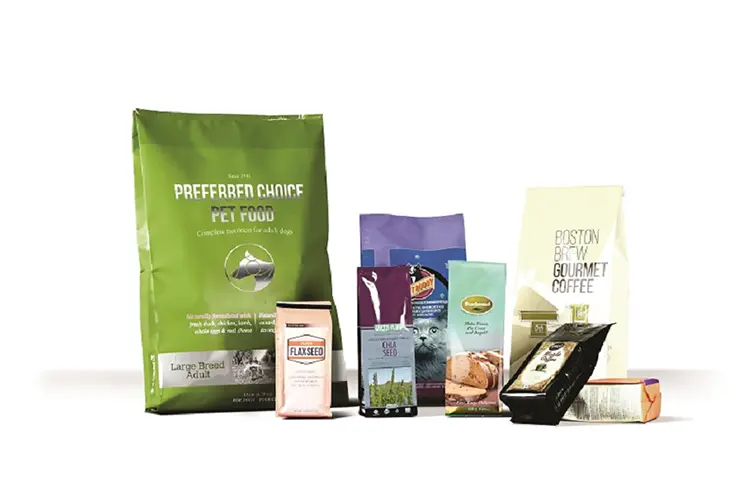लचीली पैकेजिंग: उपभोक्ताओं और उद्योगों की बदलती जरूरतों को पूरा करना
जब आप चीनी स्टिक पैकिंग मशीन में निवेश करना चाहते हैं, तो निम्नलिखित का संदर्भ लें ताकि आप सबसे उपयुक्त पैकेजिंग मशीन चुन सकें।
यह लेख पैकेजिंग में लचीलेपन की अवधारणा, इसके प्रकार, फायदे, लचीली पैकेजिंग चुनते समय मुख्य विचार, चुनौतियाँ और उद्योग में लचीली पैकिंग के भविष्य पर गौर करता है।

लचीली पैकेजिंग के प्रकार
लचीली पैकेजिंग विभिन्न रूपों में आती है, जो पैक की जाने वाली सामग्री की आवश्यकताओं पर निर्भर करती है। लचीली पैकिंग के कुछ सामान्य प्रकारों में बैग, पाउच, स्टैंड-अप पाउच, फिल्म और लेबल शामिल हैं।
बैग लचीली पैकेजिंग के सबसे सामान्य रूपों में से एक हैं। पैक किए जा रहे उत्पाद के आधार पर, वे विभिन्न आकारों में आते हैं, बहुत छोटे आकार से लेकर बड़े बैग तक। इन्हें विभिन्न सामग्रियों जैसे कागज, प्लास्टिक या दोनों के संयोजन का उपयोग करके बनाया जा सकता है।
पाउच लचीली पैकिंग का एक और सामान्य रूप है। वे बैग के समान होते हैं लेकिन एक छेद के साथ आते हैं जिसका उपयोग सामग्री को निकालने के लिए किया जा सकता है। पाउच का उपयोग अक्सर भोजन, सौंदर्य प्रसाधन और डिटर्जेंट जैसे उत्पादों की पैकेजिंग के लिए किया जाता है।
स्टैंड-अप पाउच लचीली पैकेजिंग में एक हालिया नवाचार है। उन्हें सीधे खड़े होने के लिए डिज़ाइन किया गया है, जो उन्हें स्नैक्स, पालतू भोजन और पेय पदार्थों जैसे उत्पादों के लिए उपयुक्त बनाता है।
उत्पाद को सुरक्षा की एक परत प्रदान करने के लिए लचीली पैकिंग में फिल्मों का उपयोग किया जाता है। उन्हें पैक किए जा रहे उत्पाद के आधार पर विभिन्न सामग्रियों का उपयोग करके बनाया जा सकता है। उदाहरण के लिए, पॉलीथीन से बनी फिल्मों का उपयोग आमतौर पर ताजा उपज को पैकेज करने के लिए किया जाता है।
लेबल लचीली पैकिंग का दूसरा रूप है जिसका उपयोग उत्पाद के बारे में जानकारी प्रदान करने के लिए किया जाता है। वे बैग और पाउच सहित विभिन्न प्रकार की पैकेजिंग से जुड़े हो सकते हैं।
लचीली पैकेजिंग के लाभ
लचीली पैकेजिंग पारंपरिक कठोर पैकेजिंग की तुलना में कई फायदे प्रदान करती है। इसमे शामिल है:
क्या पैकिंग सटीकता उच्च है?
एक घंटे में कितने बैग पैक किए जा सकते हैं?
लागू बैग प्रकार और वजन सीमा क्या है?
क्या इसे पाउडर और दानेदार चीनी के लिए अनुकूलित किया जा सकता है?
अधिक जानकारी के लिए हमसे संपर्क करने में संकोच न करें!
लचीली पैकेजिंग चुनते समय मुख्य विचार
लचीली पैकेजिंग चुनते समय, कई महत्वपूर्ण बातों को ध्यान में रखना आवश्यक है। वे इस प्रकार हैं:
कई चीनी पैकिंग मशीन निर्माताओं में से शुली को क्यों चुनें?
शुली एक ऐसा कंपनी है जिसके पास पैकेजिंग उद्योग में समृद्ध अनुभव है। एक पैकेजिंग मशीन निर्माता और आपूर्तिकर्ता के रूप में, हमारे पास ग्राहकों को आकर्षित करने के लिए निम्नलिखित लाभ हैं:
पैकेजिंग मशीन उद्योग में 10 से अधिक वर्षों का अनुभव, विश्वभर में कई ग्राहकों की सेवा।
एक-स्टॉप पैकेजिंग समाधान प्रदान करना, फीडिंग से लेकर तैयार उत्पाद आउटपुट तक पूर्ण स्वचालन।
कई देशों में निर्यात, बहु-भाषा मार्गदर्शन, दूरस्थ कमीशनिंग और बिक्री के बाद सेवा का समर्थन।
लचीली पैकेजिंग की चुनौतियाँ
जबकि लचीली पैकेजिंग कई फायदे प्रदान करती है, यह कुछ चुनौतियाँ भी प्रस्तुत करती है। इसमे शामिल है:
यथार्थवादी मूल्य, गुणवत्ता की गारंटी, अनुकूलन का समर्थन कर सकते हैं और कस्टम-निर्मित अनुशंसित मॉडल।
क्या आप चीनी पैकेट पैकिंग मशीन में रुचि रखते हैं? किसी भी समय हमसे संपर्क करें और हम आपके पैकेजिंग व्यवसाय के लिए सबसे अच्छा समाधान प्रदान करेंगे!
छोटे ग्रेन्यूल पैकेजिंग मशीन की कुशल पैकेजिंग प्रक्रिया | ग्रेन्यूल पैकेजिंग समाधान
निष्कर्ष
निष्कर्षतः, लचीली पैकेजिंग आधुनिक समय की पैकेजिंग आवश्यकताओं के लिए एक बहुमुखी और लागत प्रभावी समाधान है। इसकी हल्की और लचीली प्रकृति न केवल उपयोग की जाने वाली सामग्री को कम करती है बल्कि परिवहन लागत और कार्बन फुटप्रिंट को भी कम करती है, जिससे यह टिकाऊ और पर्यावरण-अनुकूल पैकेजिंग विकल्पों की तलाश करने वाली कंपनियों के लिए पसंदीदा विकल्प बन जाता है। लचीली पैकिंग के उत्पादन में उपयोग की जाने वाली उन्नत तकनीक उत्पाद की सुरक्षा, सुविधा और संरक्षण सुनिश्चित करती है, जिससे यह खाद्य और दवा उद्योगों में एक पसंदीदा विकल्प बन जाता है। जैसे-जैसे टिकाऊ और सुविधाजनक पैकेजिंग की मांग बढ़ती जा रही है, निकट भविष्य में लचीली पैकेजिंग को अधिक लोकप्रियता और स्वीकार्यता मिलने की संभावना है।
चीनी पैकेट पैकिंग मशीन विशेष रूप से चीनी पैकिंग के लिए डिज़ाइन की गई है। यह स्वचालित रूप से वजन, भराई और सीलिंग पूरा कर सकती है, पैकिंग की गति 20-100 बैग प्रति मिनट है।
